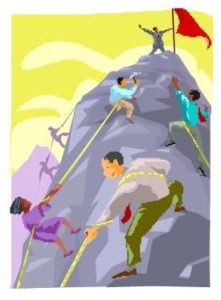By Paul David Walker
As business leaders we need to have a clear picture of present reality in order to make effective decisions. Meditation is a practice designed to clear the mind of stress and distortion, and allow you to experience present reality.
Over time our minds become filled with thoughts and beliefs that were placed there both consciously and unconsciously. We have defined experiences and recorded them as  beliefs. Thought patterns have developed over the years, some of which are helpful and others are not. We are bombarded with ideas, advertising and images from TV and movies that stick in our memories. These thoughts often circle in our minds causing fear and stress.
beliefs. Thought patterns have developed over the years, some of which are helpful and others are not. We are bombarded with ideas, advertising and images from TV and movies that stick in our memories. These thoughts often circle in our minds causing fear and stress.
All these thoughts and beliefs were filtered by our mood at the time we experienced them. If we are in a good mood, we tend to record a more positive message; if we are in a bad mood, it will be more negative. When we recall this information it is also filtered by our mood at the moment of recall. The bottom line is our mind is full of highly distorted information that is often conflicting.
Meditation helps to clear the mind and leave room in our consciousness to experience the reality of the moment. The flow of cause and effect is highly complex and, in order to be successful business leaders, we need to be able to see present reality with a minimum of filtering from the thoughts and images filling our minds.
When working with teams of engineers, I enjoy asking if anyone has invented a successful time machine. Of course, they always say no. Then I ask, “So you are certain that no one can travel to the past and the future?” They laugh and agree. Therefore, there is no reality outside of the present moment. The future is a speculation, and the past is what we have recorded in our memory or in writing, which is, as I said earlier, highly distorted.
Yet how much of the time do most leaders spend traveling to the past and the future in their mind? I would suggest, too much. The best leaders realize that being able to live in the present moment is the secret to both personal power and strategic advantage. They learn to see through false realities and connect with true reality.
An Example from Sports
After watching Florence Joyner win the hundred meter dash, the TV interviewer showed a super slow motion playback of her run. She was about equal with the field through the middle of the run, and then she leaped out way ahead of the field to win the race. The interviewer played the run again, and just as she put distance between her and the field, the interviewer stopped the tape and pointed to the screen and asked, “What happens right here?” Florence answered, “I just let go.”
She stopped thinking about the race and slipped into what sports coaches call “The Zone” and, of course, her performance accelerated dramatically. She was integrating all her training with the reality of the present. Being able to find your way into “The Zone” is critical for success as an athlete. Some respond to pressure by “clutching” and thereby reducing performance, and others slip into “The Zone.” Michael Jordan was famous for performing better under pressure, as are many successful athletes. As a leader, is this true for you? When the pressure is on, do you call for the ball?
Integrative Presence
Sports coaches realize that if athletes think too much about the past and the future, they will miss the reality of what is happening in the present. The future extends from the present, not from the cognitive frameworks in your mind. Those who can let go of their thoughts will find it easier to integrate their actions with present reality. In business, I call  this “Integrative Presence.”
this “Integrative Presence.”
If an athlete can create this state of mind, so can a leader. If these states of mind that seem to create super human results can be created in one area of life, they should be able to be created in others. While the environment is right for this kind of performance in sports, it is not beyond or separate from the business world. The most effective leaders have mastered Integrative Presence.
Integrative Presence unleashes genius in any endeavor. Integrative Presence, as I define it, is collaboration with the natural flow that extends from the present integrated with the knowledge, intention and consciousness of an individual or group. Integrative Presence allows you to integrate all the realities of the moment simultaneously while combining them with your intention. Those who master this will Unleash Genius within themselves, and the people who follow them, to create new realities once unimaginable.
Business is much more complex than sports, but the state of mind that creates Integrative Presence is as important for leaders as it is for athletes. The best leaders are able to achieve this state at will. In a board meeting or when closing an important deal, the best leaders can be in the present while integrating their knowledge and all the events that are happening around them simultaneously.
The truth is anything can cause your conscious mind to let go of comparative thought and find Integrative Presence. It would be impossible to catalog all experiences people have had. What is important is to know the difference between the two states of mind. Meditation is a practice that will help you find your personal road map into this powerful state.
 When I have asked people to describe how they feel when they experience “Integrative Presence” they say things like: confident, at peace, exhilarated, powerful, graceful, focused and present. Some report a slow-motion effect. Kareem Abdul-Jabbar told how the five seconds he had to win the NBA championship with one shot seemed like five minutes. He felt relaxed, as if he had all the time in the world, yet he appeared to move like lightning to the rest of the world–the very definition of “Integrative Presence.” His creativity, within these few precious seconds, was nothing less than pure genius. He was integrating the skills he had learned over the years, his desire to make the shot, and the flow of the moment, without interruption from his thoughts.
When I have asked people to describe how they feel when they experience “Integrative Presence” they say things like: confident, at peace, exhilarated, powerful, graceful, focused and present. Some report a slow-motion effect. Kareem Abdul-Jabbar told how the five seconds he had to win the NBA championship with one shot seemed like five minutes. He felt relaxed, as if he had all the time in the world, yet he appeared to move like lightning to the rest of the world–the very definition of “Integrative Presence.” His creativity, within these few precious seconds, was nothing less than pure genius. He was integrating the skills he had learned over the years, his desire to make the shot, and the flow of the moment, without interruption from his thoughts.
Most people have experienced this state of mind; the question is what percent of your life is spent in this state. The art of getting into this state of mind is letting go of thoughts and connecting with the flow of events in the moment. Meditation is practice for your mind and body. An athlete must practice their sport, a leader must practice disciplining their mind. Meditation is a time-tested form of practice.
There is no Substitute for Practice
As in sports, there is no substitute for practice. Knowing how to move from “normal thinking” into Integrative Presence comes from practice. Take time to connect with your peak experiences and observe how you transitioned yourself. Find ways to still your mental chatter and connect with the present, and you will become a much more effective leader and a happier person.
Meditation Technique
The following is a simple meditation technique that can help you clear your mind. It will help establish an inner road map to stillness, which allows you to flow with present reality.
1) The Right Environment: Find a quiet place and arrange to have no distractions or interruptions. A special place in your home or a place out in nature. It is especially important in the first stages of meditation to find a special place. It helps you move towards stillness naturally. Over time you will be able to meditate anywhere, at any time, even as you walk through hallways.
2) Sit Comfortably: You want your body to be at ease. Find a chair that is comfortable and sit up straight; be sure not to cross you arms or legs. Sitting up straight in a way that you will not have to move should one of your limbs fall asleep is important.
3) Three Deep Breaths: Take three deep breaths and hold the oxygen in as long as you can on each breath, and let the oxygen out suddenly once you can no longer hold the air.
4) Breathe Normally: Return to your normal breathing pattern. Close your eyes and put your attention on your breathing process. Follow your breath in and then out. Notice the rhythm and depth of each of your breaths. Spend 2-3 minutes just following your breath with your attention.
5) Imagine a Beautiful Place: Imagine yourself in a beautiful place in nature. Choose a favorite spot or create a spot that would be ideal for you. Each time you begin meditating come back to this place. It will serve as an anchor for peace and help you to relax each time. Once you have felt the peace of this place, use it as a background and return your attention to your breathing.
6) Let Go of Thoughts: As thoughts arise in your mind, do not resist them. Practice observing without processing, and then letting go of them. You can imagine them floating up  into the sky or being absorbed by nature. As you let go return your attention to your breathing.
into the sky or being absorbed by nature. As you let go return your attention to your breathing.
7) Deepen Your Breathing: Once you have found your natural rhythm increase the depth of your breathing. Inhale 10-15 percent deeper and exhale 10-15 percent deeper. Play with this deeper rhythm until it becomes natural. Continue to let go of thoughts as they arise.
8) Notice Stillness: Notice that at the moment you fully inhale, just before you exhale, there is a still point. Likewise, after you have fully exhaled, there is the same still point. One, the inhale, is full and the second, the exhale, is empty. Notice the difference.
9) Fall into Stillness: At times when your total focus is on this deeper breathing process, you will notice the stillness inside you. Let your consciousness fall into this stillness. Let go and don’t be afraid; it is your destination. Stay there as long as your ego will allow. It might take a number of sessions before you achieve this, but it is worth the practice and discipline.
10) Open Your Eyes: In about 20-25 minutes gently open your eyes without moving and notice the world around you. Notice your state of mind and journal your experience.
11) Take This State of Mind With You: Practice staying with this state of mind as you get up from your chair and walk, focusing on your breathing as before. Find a rhythm between your steps and your breath. Count how many breaths per step until you find a comfortable pace that is a little deeper than normal. This will help you begin to integrate this state of mind into your daily life.
12) Do Short Meditations: Once you have mastered this practice you will be able to take a few minutes to clear your mind between meetings or even with short pauses during meetings.
Meditation creates the same state of being that Florence Joyner and other athletes achieve when they are in “The Zone.” Your consciousness will deepen and widen and you will be able to perform more effectively. Remember, there is no substitute for practice.
As you continue to meditate, you will find the quality of your thought improving. You will have great ideas and find it easy to solve problems. Creating this space of stillness within you leads to Integrative Presence. Meditation is a powerful tool for those who are creating the future. It helps with idea generation and stress reduction. If you are a leader, you need both to be successful.
For more tips, please click here listen to our teleconference audio link.
Paul David Walker is a Senior LCS Consultant and one of the few CEO coaches who has worked with numerous Fortune 500 CEOs and their key staff members for over 25 years along with many mid-cap organizations. Some of the organizations that Paul has worked with include Star Kist Foods, Von’s Grocery Stores, New York Life, Anne Klein, Rockwell International countless manufacturing, global utilities, service and consulting organizations. Paul is the founder of Genius Stone Partners, and works with domestic and international companies to improve their bottom line today and planning for the future. Paul is the author of the best selling book, Unleashing Genius and his new book, Invent Your Future – 7 Imperatives for a 21st Century. You can reach Paul at Paul@lighthouseconsulting.com.
Permission is needed from Lighthouse Consulting Services, LLC to reproduce any portion provided in this article. © 2014
If you would like additional information on this topic or others, please contact your Human Resources department or Lighthouse Consulting Services LLC, 3130 Wilshire Blvd., Suite 550, Santa Monica, CA 90403, (310) 453-6556, dana@lighthouseconsulting.com & our website: www.lighthouseconsulting.com.
Lighthouse Consulting Services, LLC provides a variety of services, including in-depth work style assessments for new hires & staff development, team building, interpersonal & communication training, career guidance & transition, conflict management, 360s, workshops, and executive & employee coaching. Other areas of expertise: Executive on boarding for success, leadership training for the 21st century, exploring global options for expanding your business, sales and customer service training and operational productivity improvement.
To order the books, Cracking the Personality Code and Cracking the Business Code, please go to www.lighthouseconsulting.com.
 wild. In front of us were the Truchas peaks, which we intended to climb. It had sounded like a great idea a month ago, but now they were shrouded in clouds and the rumble of thunder. They looked foreboding and unapproachable. We asked ourselves, “Why are we doing this? It’s going to be uncomfortable and even dangerous—why don’t we just turn back now and admit defeat?”
wild. In front of us were the Truchas peaks, which we intended to climb. It had sounded like a great idea a month ago, but now they were shrouded in clouds and the rumble of thunder. They looked foreboding and unapproachable. We asked ourselves, “Why are we doing this? It’s going to be uncomfortable and even dangerous—why don’t we just turn back now and admit defeat?” determine who we will become. We will all face the crises of living: pain, loss, death. The individuals with the best probability of responding with courage and creativity are those who are best prepared emotionally and spiritually. Prepared people can handle all kinds of weather; deeply prepared people see the weather as a challenge and as an opportunity to grow.
determine who we will become. We will all face the crises of living: pain, loss, death. The individuals with the best probability of responding with courage and creativity are those who are best prepared emotionally and spiritually. Prepared people can handle all kinds of weather; deeply prepared people see the weather as a challenge and as an opportunity to grow.




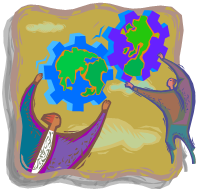




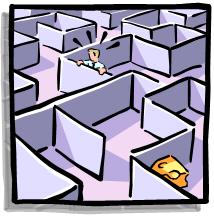


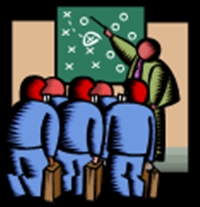

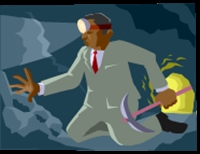

 Lose That Excess Baggage
Lose That Excess Baggage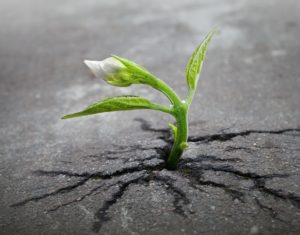 Be honest with yourself about flaws in yourself and others. Look at your part in those problem situations and what you could do differently. Chip away at the old behaviors and find small ways to change. An example could be pleasing others to control them. You could learn to be more direct for what you want or need. Or rationalizing one’s moodiness where instead you could develop guidelines for minimizing the moods and how they impact others.
Be honest with yourself about flaws in yourself and others. Look at your part in those problem situations and what you could do differently. Chip away at the old behaviors and find small ways to change. An example could be pleasing others to control them. You could learn to be more direct for what you want or need. Or rationalizing one’s moodiness where instead you could develop guidelines for minimizing the moods and how they impact others.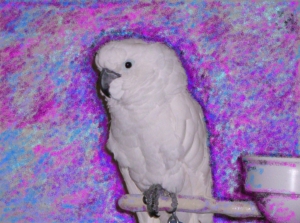 So, I leave you with this thought: How often do you convince yourself that you cannot fly, when you really can? To quote what President Abraham Lincoln said 160 years ago: “Most folks are as happy as they make up their minds to be.” The same can be said for self-esteem. Happy flying!
So, I leave you with this thought: How often do you convince yourself that you cannot fly, when you really can? To quote what President Abraham Lincoln said 160 years ago: “Most folks are as happy as they make up their minds to be.” The same can be said for self-esteem. Happy flying!
